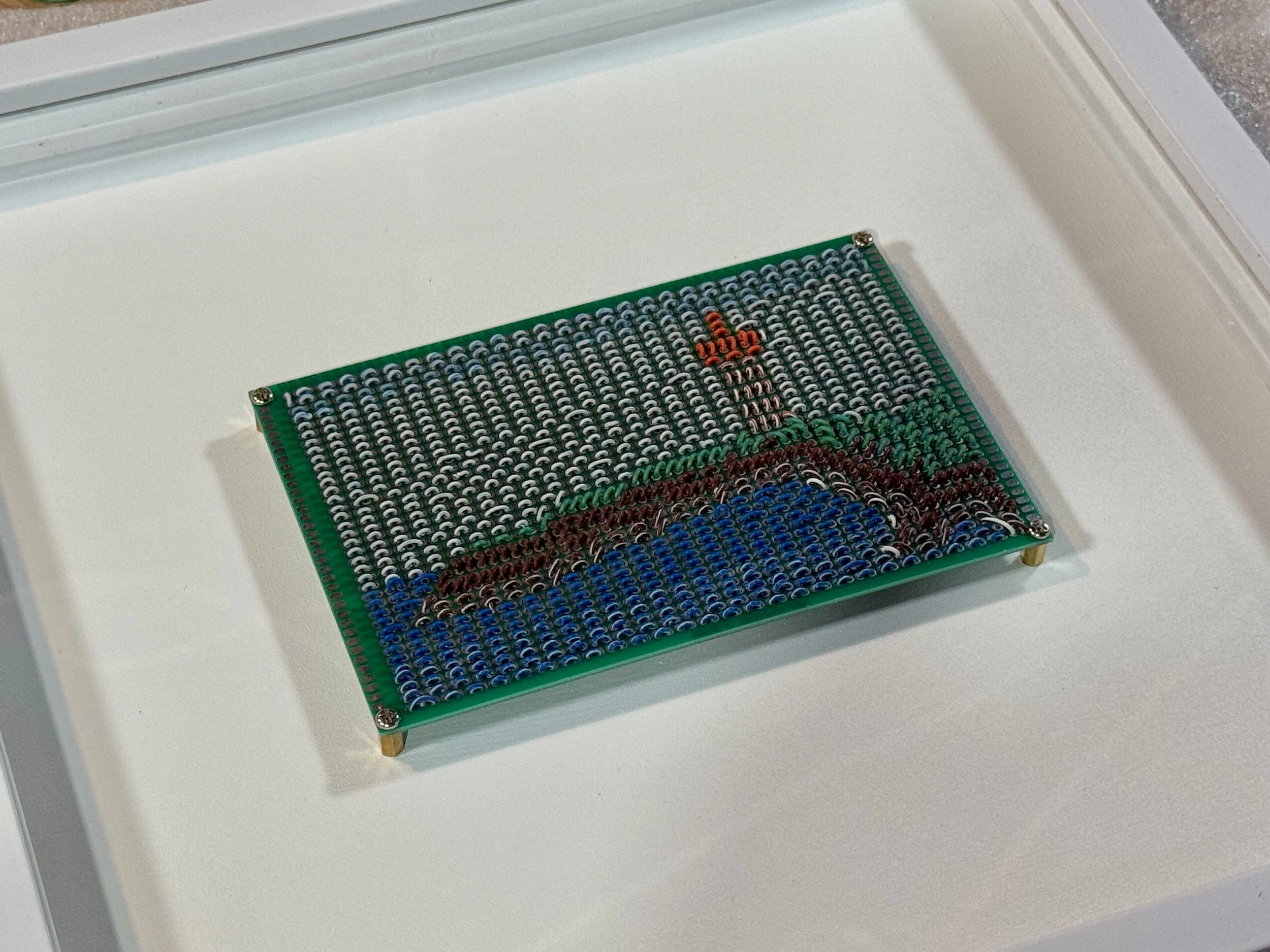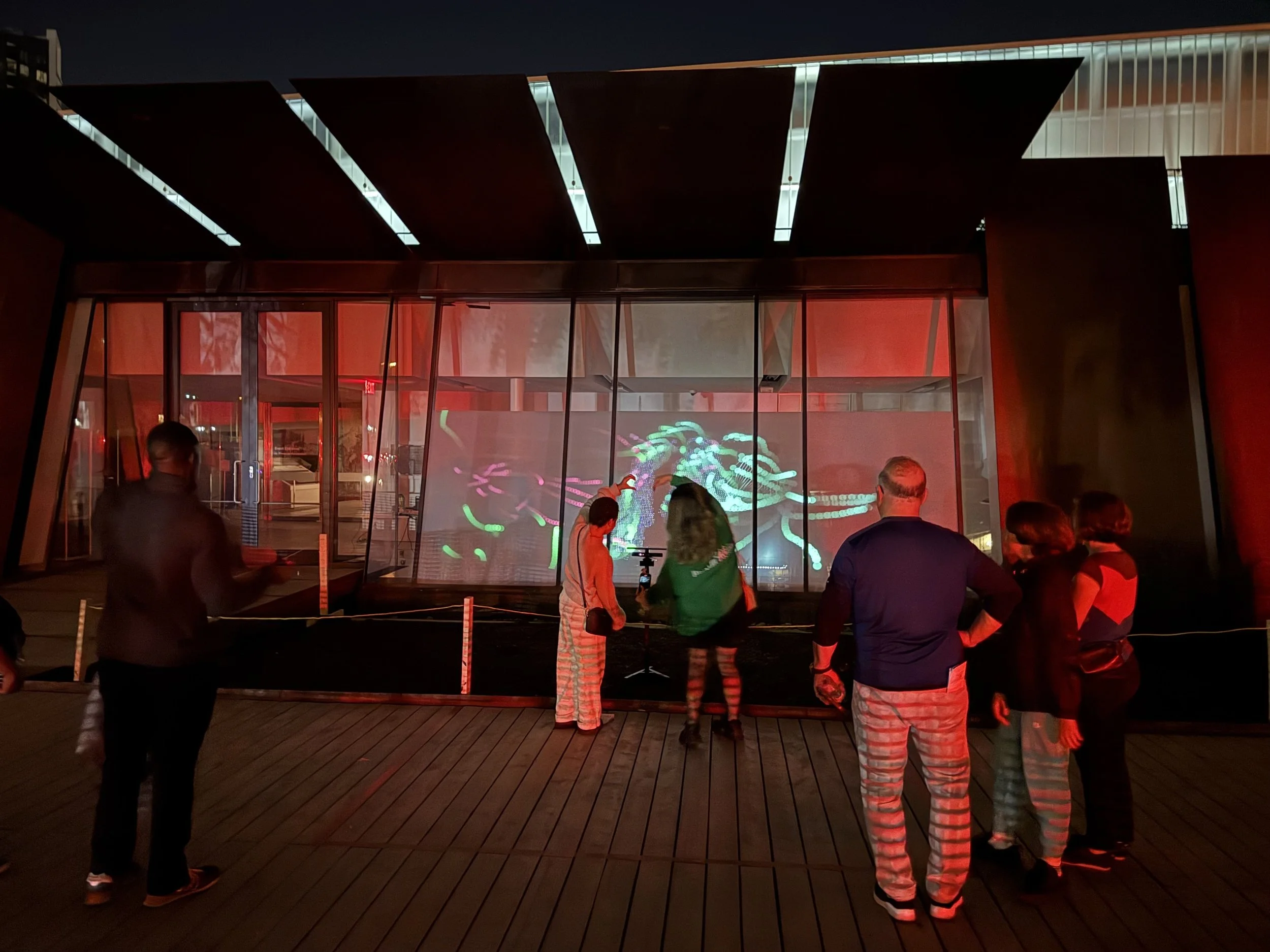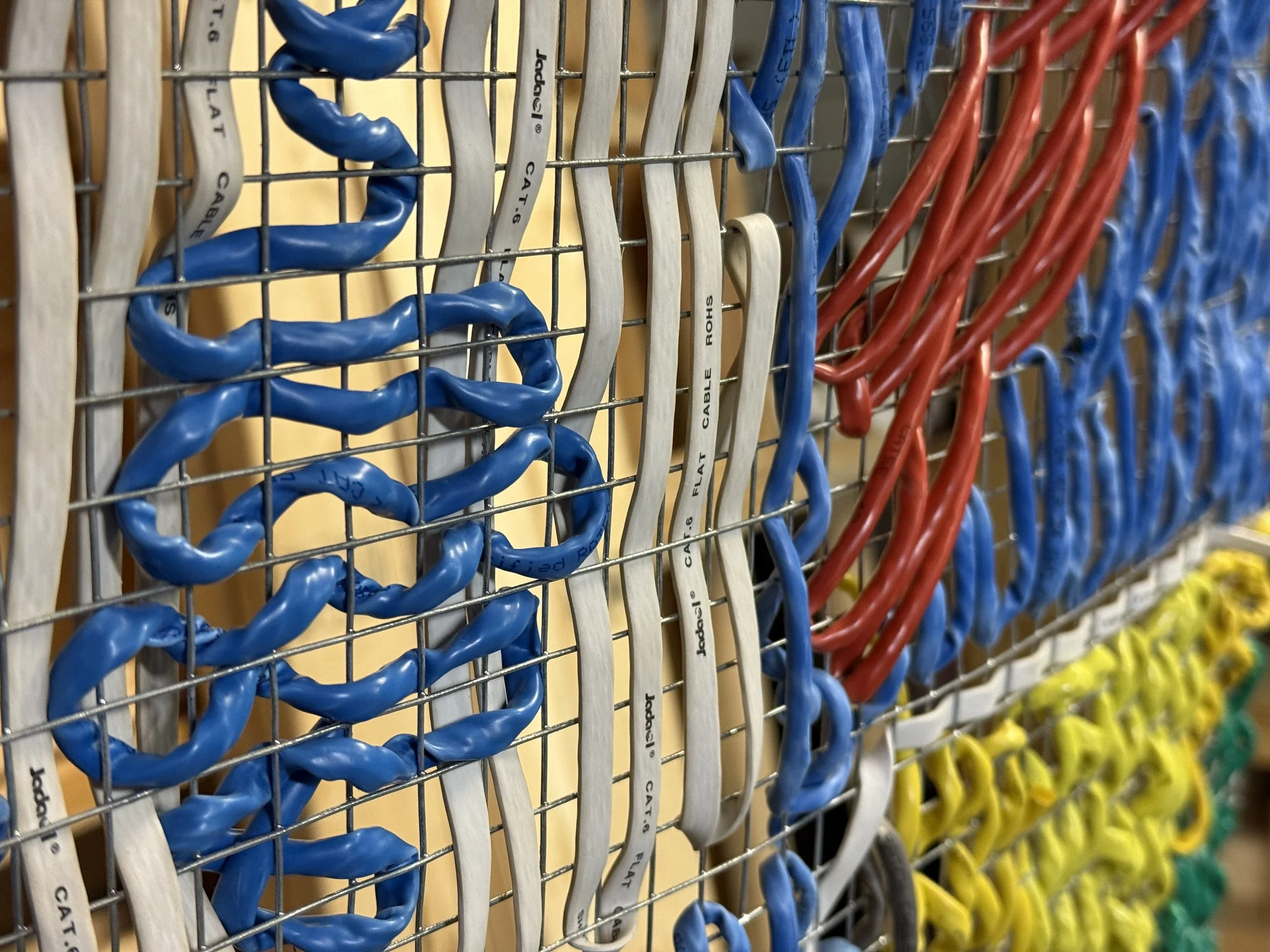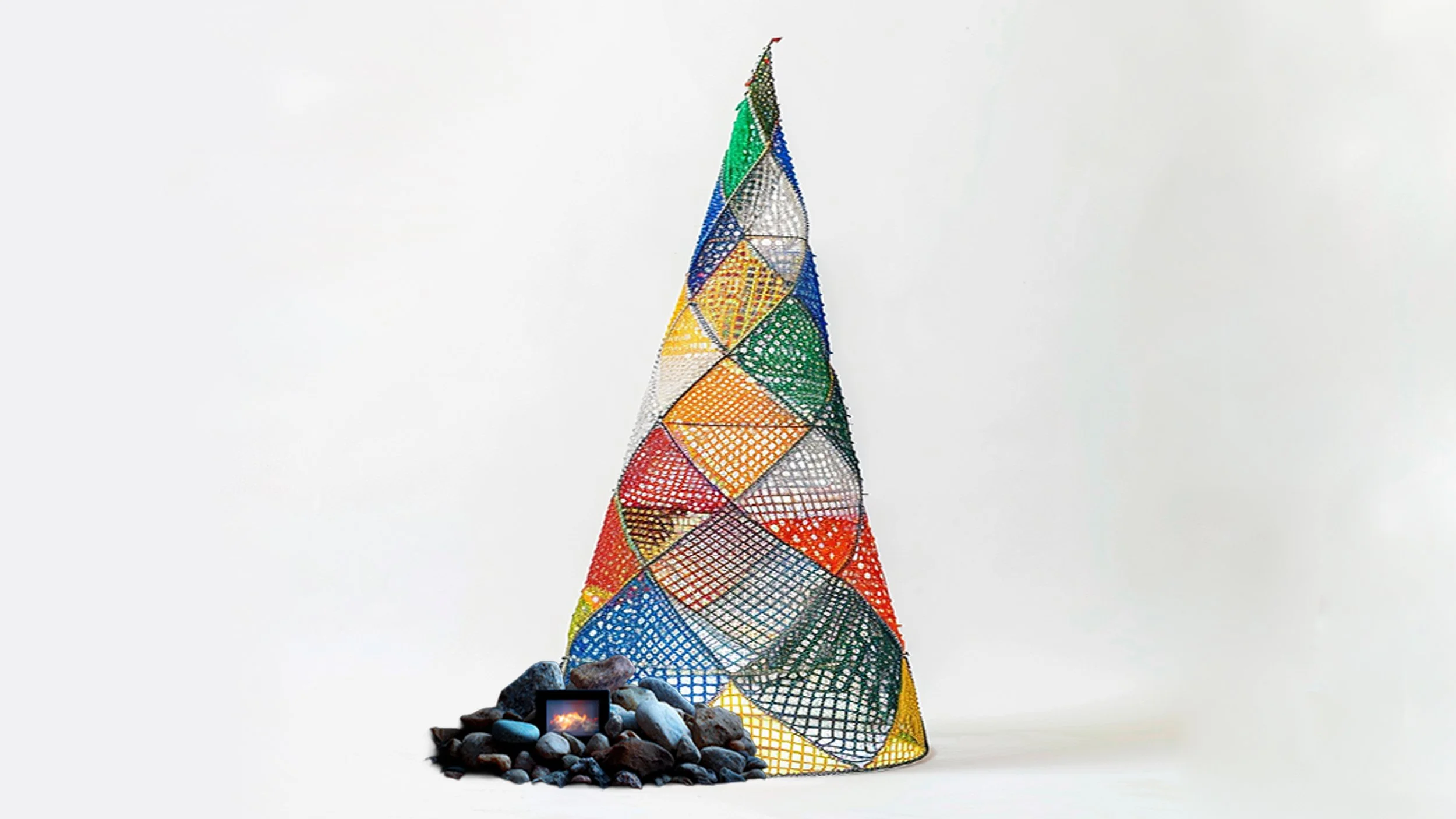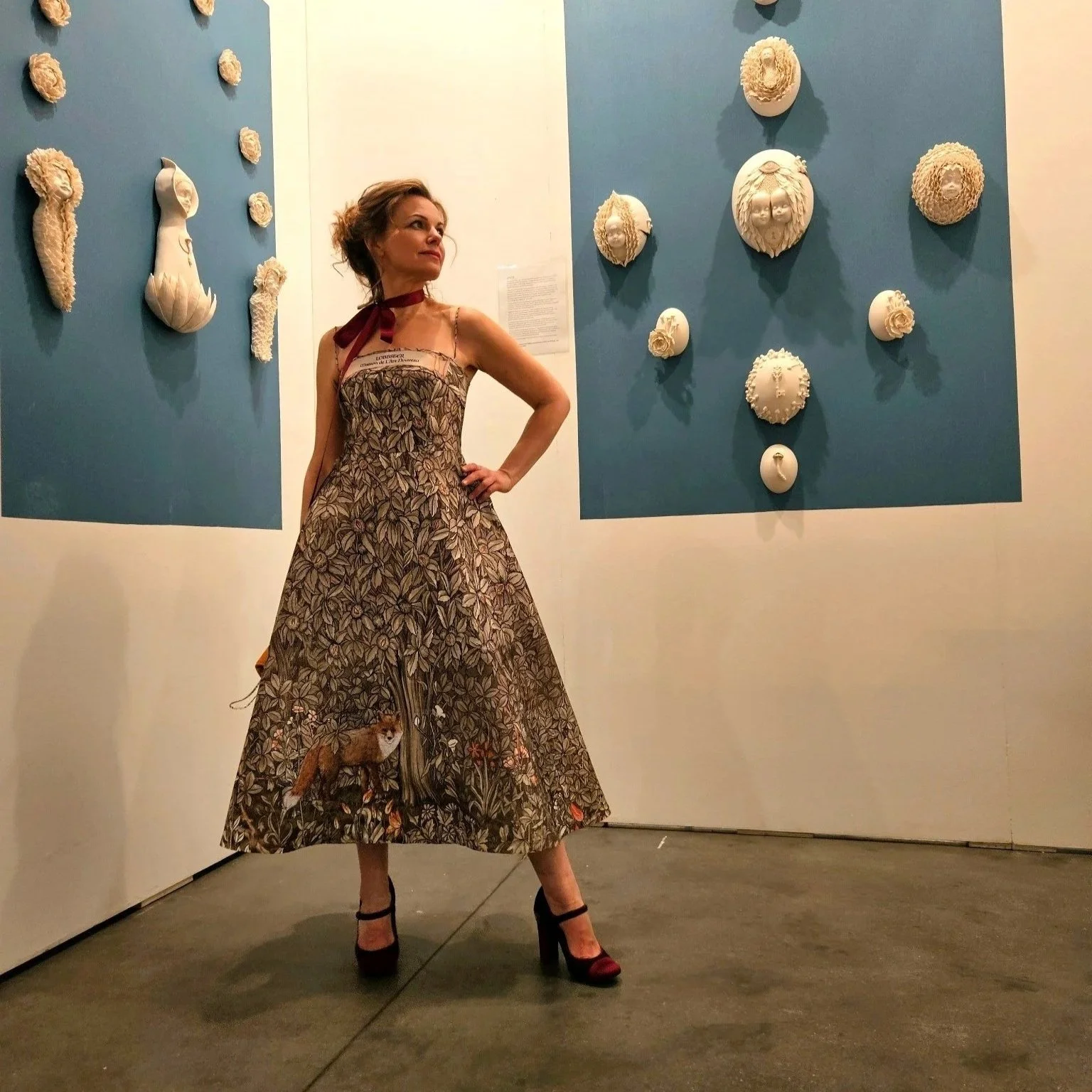Modern Artist Profile - Jordan Shaw
/In conversation with Jordan Shaw, one of the many talented artists participating in the 2025 Mississauga Festival of Trees.
1. Tell us a bit about your art practice. What do you specifically do?
I'm a Toronto-based artist and creative technologist whose practice investigates how invisible digital infrastructure shapes our lives. I frame everything through the lens of "data as material"—working across sculpture, installation, light, textiles, and interactive media to transform invisible signals and computational processes into physical experiences you can see, touch, and move through.
My work operates at two scales. In the studio, I create data paintings, electronic textiles with woven circuit boards, and interactive sculptural works that invite intimate one-on-one encounters. These gallery-based investigations serve as a research laboratory for larger public commissions—interactive light sculptures, responsive installations, and immersive environments for festivals, municipalities, and cultural institutions across Canada.
At the core of my work is this question: how do we visualize and materialize the invisible networks, signals, and infrastructure that connect us—the technology we use every day but rarely stop to see or consider? My work makes those hidden systems visible and tangible.
2. What inspires you?
What inspires me is the intersection of technology, community, culture, and place—exploring how physical and digital worlds weave together.
I grew up building things outdoors, then spent years as a software engineer. My art practice bridges those worlds by investigating what's happening behind our screens. We depend on technology for connection, but the physical infrastructure—cables, servers, networks—often goes unseen. Highlighting that hidden reality is important.
During COVID, when I couldn't visit my grandmother in Cape Breton, technology kept us connected. I started creating smaller electronic tapestries—weaving Ethernet cables through circuit boards—which helped me feel closer to her place, her rug hooking tradition, and our family's cultural identity. Networked Growth scales that exploration up: a nine-foot tree that celebrates how communities, both physical and virtual, are woven together by shared rituals, stories, and infrastructure.
The material matters too. All the Ethernet cables are upcycled e-waste I sourced across the GTHA; about half the lumber is reused as well. Using these materials isn't about judgment—it's about recognizing their value, their stories, and giving them new life.
3. How do you approach a new project?
I approach projects through a combination of observation, research, and physical testing.
My best ideas come during long bike rides or runs—when my mind can wander and make unexpected connections.
I start with small-scale studio experiments. For Networked Growth, that meant weaving stripped Ethernet wires into circuit boards for gallery pieces. Those smaller-scale works, currently showing in Orillia and Hamilton, led me to ask: what if I used full Ethernet cables at architectural scale?
Once I have a concept, I test materials obsessively. I sourced upcycled cables across the GTHA, then spent hours testing weaving techniques—balancing aesthetics, detail, and build time. I sometimes propose ambitious ideas before I know exactly how I'll build them. But figuring it out excites me.
4. Describe the experience of working with CreativeHub 1352 in Mississauga on a commissioned artwork for the Festival of Trees.
It's been great! CreativeHub has been supportive and genuinely curious about the work. What I appreciate most is their openness to the conceptual depth of the piece—this isn't just decorative, it's about materiality, upcycling, and connection. They gave me creative freedom while being available for technical questions. The festival's themes of culture, connectedness, and community aligned perfectly with what I was already exploring, so the project felt like a natural fit rather than forcing concepts into a prescribed box.
5. What excites you about Mississauga’s Festival of Trees?
The Festival creates this beautiful collision of art, community gathering, and seasonal celebration. There's something special about encountering unexpected artwork in that context—people come with their families, maybe expecting traditional holiday decorations,
and instead find interactive installations and conceptual sculptures.
I'm excited for people to discover the woven patterns up close, see the digital fireplace transmitting actual data through the tree's cables, and maybe think differently about the Ethernet cables running through their own homes. If the work sparks even one conversation about craft traditions, e-waste, or how technology connects us, that's a win.
6. What’s in store for 2026?
Big year ahead! I have a solo exhibition opening in Nova Scotia in the fall of 2026, continuing my Data as Material series that showed this summer at Micak Contemporary Art Gallery. I'll be adding new data paintings, sculptures, electronic textiles and installations to that body of work.
I just completed another public commission for the Waterloo Region Mistletoe Trail—a suspended Ethernet light sculpture made from Ethernet cables that's up through February 2026. Working on these parallel projects reinforces something I'm passionate about: gallery-based research and public-scale work don't have to be separate paths. They inform and strengthen each other.
I'm also developing datanet.art — a platform providing real-time data infrastructure for interactive art.

